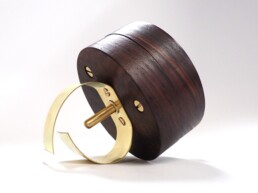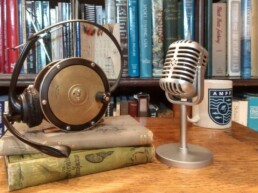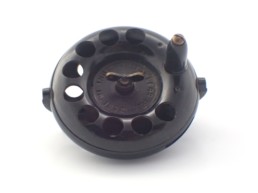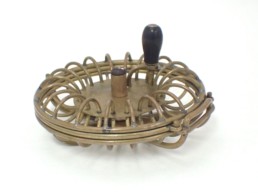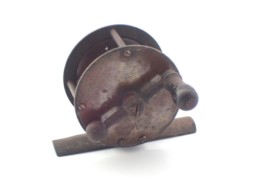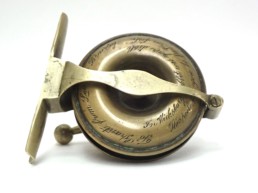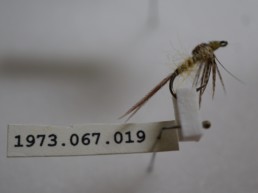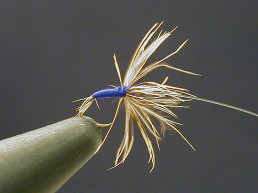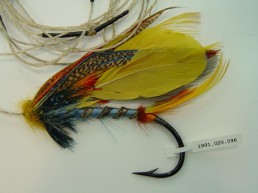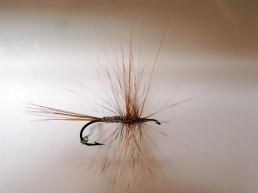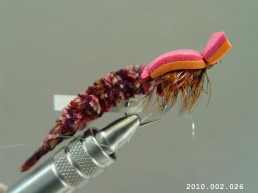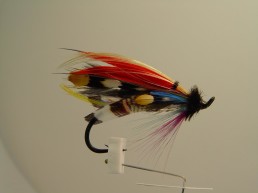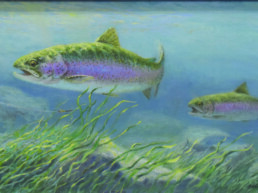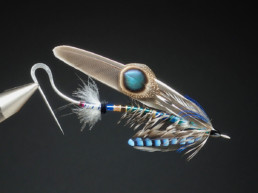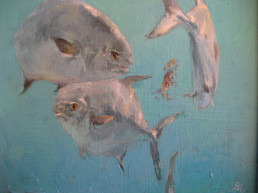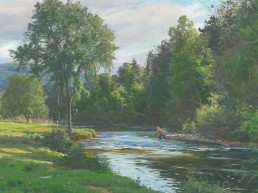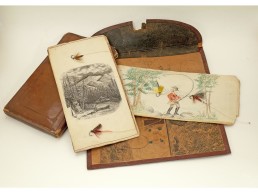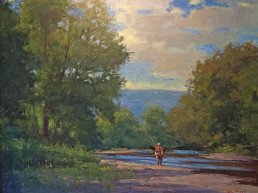Search Our Online Collections
Explore our new online collections database as AMFF continually works to digitally document our vast holdings and make our cataloged records public for research.
Explore Our Reel Collection
The Museum maintains an impressive collection of 1,200 reels that demonstrate the evolution from the early cast bronze reels to today’s lightweight aluminum reels. The collection includes some well-known and other lesser-known reel makers from around the world.
Explore Our Fly Collection
Some of the most notable names in the history of fly tying—including Theodore Gordon, Preston Jennings, George LaBranche, Edward Hewitt, Megan Boyd, Lee Wulff, and Helen Shaw—are represented in the Museum’s fly collection of more than 22,000 flies. The collection also includes the oldest documented flies in existence.
Explore Our Rod Collection
Our collection comprises more than 1,400 rods, from an early nineteenth-century wooden rod once belonging to Daniel Webster to today's ultralight graphite models. Rods made by Leonard, Murphy, Thomas, Edwards, Chubb, Orvis, and their contemporaries represent the early development of American fly rods, whereas the efforts of later artisans such as Gillum, Garrison, Payne, Dickerson, Powell, and Young trace the evolution of the bamboo rod throughout the twentieth century. The collection also holds rods that once belonged to a number of well-known figures, including Babe Ruth, Winslow Homer, Ernest Hemingway, Herbert Hoover, Ted Williams, Glenn Miller, and Dwight Eisenhower.
Explore Our Art & Media Collection
Everyone knows about the Museum’s outstanding collection of rods, reels, and flies, but our collection of art, photographs, and other media offer us another method of documenting and preserving fly-fishing history.
Our holdings contain over 700 prints and paintings, 90 linear feet of photographs and archival materials, and 1700 pieces of ephemera. One of our recent projects was to interview, record, and film nine saltwater fly-fishing pioneers as they recounted the changes in the saltwater field during its explosive growth during the mid-twentieth century, interviews which were later incorporated into our traveling saltwater exhibition.


